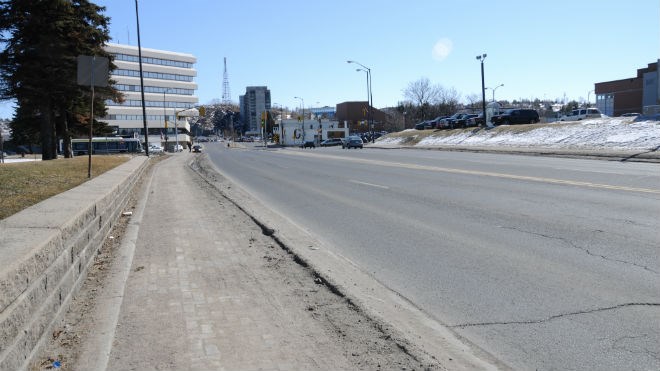The city released its draft Transportation Plan last week, a document that will guide how the city develops its transportation network until 2031.
The plan puts a major emphasis on making it easier for people in the city who don't want to drive their cars.
Brett Sears, project manager for transportation planning for consultants MMM Group, told city councillors that the "complete streets" policy means the needs of pedestrians and cyclists should be included when road improvements are being planned.
“A complete street is a place people want to be,” Sears said. “It supports a more livable community.”
Under the policy, a typical road cross-section would include a sidewalk, bike lane and a vehicle lane. Committing long-term to the policy will mean walking and cycling infrastructure will eventually connect.
“We're trying to fill in missing links,” he said. “We're trying to make sure people can get to where they want to go.”
The best approach is to combine infrastructure works whenever possible, rather than going back and trying to add sidewalks and bike lanes later. That approach, Sears said, is good for connectivity and makes good economic sense.
“It's much more efficient to do everything at one time, rather than go back and retrofit,” he said.
In addition to expanding transportation options, the plan also identifies areas where congestion can be reduced and where roads need to be built to promote intensification. Intensification is the policy where cities promote growth in areas where services such as sewer and water and snowplowing are already available.
Not only does the policy make city infrastructure more affordable to maintain, it also fits with provincial policies aimed at combating global warming. The idea is more people living closer together will make municipal transit more viable and lead to shorter commutes, and less air pollution.
The city's biggest infrastructure project – the $88-million Maley Drive extension – came in for some criticism because of a planned link to Montrose Avenue. Dozens of Montrose residents attended city council, and applauded questions from Ward 12 Coun. Joscelyne Landry-Altmann, who questioned the impact the link would have on people who live on the street.
Building a direct link with Montrose and Maley “will destroy a very, very attractive neighbourhood,” Landry-Altmann said.
“This is exactly what the residents are trying to protect,” she added, showing a photo of Montrose with beautiful trees lining the street.
She said residents are worried they'll suffer the same fate as homeowners on Southview Drive, which has become a busy road during rush hour.
“Residents cannot get out of their driveways,” Landry-Altmann said. “If Southview is an example of what this is, it does not bode well for Montrose.”
But Sears said Montrose is one of several links to Maley being proposed, with the idea of offering enough ways to access Maley so that no one street will become overburdened.
“There's a demand for east-west traffic, and that's what Maley Drive is trying to address,” he said. “If we're going to start to take out one road here, one road there, it undermines the overall analysis.”
Creating a less congested road network will improve traffic flow on Lasalle, for example, and the extension will ultimately benefit residents in the area.
“We believe there will be a day that residents will be happy to have a link to Maley Drive,” he said.
Other councillors had other concerns: Ward 9 Coun. Deb McIntosh said the plan seemed very cars-oriented and lacked a means of ensuring sidewalks and bike lanes will be built.
“How does this plan reduce the number of single-use vehicle trips?” she asked. “There's nothing driving pedestrian or cycling infrastructure … where it becomes a priority."
Ward 8 Coun. Al Sizer wondered about traffic-calming measures, a priority for his “condensed” ward. And Ward 3 Coun. Gerry Montpellier wondered if the plan offered hope for residents in his area for Sudbury Transit service.
“I'm from Ward 3, which is four former towns,” Montpellier said. “There never has been a regular bus schedule. The 9,000 people who live in Ward 3 can't get to the city. There has never been serviced by a bus.”
With so many questions, a special city council meeting is being planned to allow for a fuller discussion of the more than 300-page document.
Public input sessions will also be scheduled, and members of the public can review the plan online anytime at the city's website.
Join Sudbury.com+
- Messages
- Post a Listing
- Your Listings
- Your Profile
- Your Subscriptions
- Your Likes
- Your Business
- Support Local News
- Payment History
Sudbury.com+ members
Already a +member?
Not a +member?
Sign up for a Sudbury.com+ account for instant access to upcoming contests, local offers, auctions and so much more.
